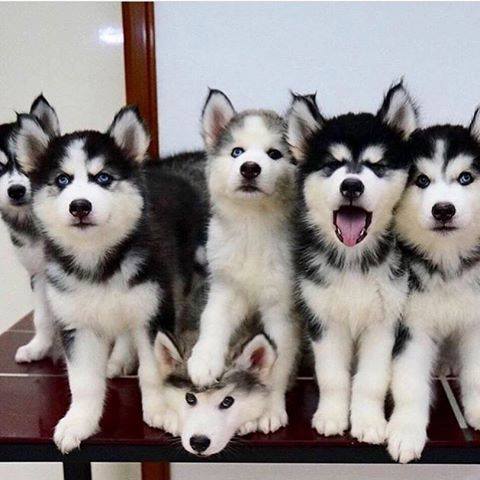20 most dangerous dogs in the world
Introduction
Understanding Dog Breeds and Behavior
Dogs are known as man’s best friend, but it’s essential to understand that not all dogs are the same. While most dogs are friendly and loving, some breeds have been bred for specific purposes that can make them more prone to aggressive behavior. It’s crucial to remember that a dog’s behavior is influenced by various factors, including their upbringing and training. In this article, we will explore a list of the 20 most dangerous dogs in the world based on their potential aggression. It’s important to approach this topic with an open mind and understand that every dog, regardless of breed, can be gentle and loving with the right care and training.
Pit Bull Terrier

The Pit Bull Terrier is a widely recognized breed known for its muscular build and strong jaws. However, there are several misconceptions surrounding this breed. Pit Bulls are often unfairly portrayed as aggressive and dangerous dogs. In reality, their behavior is largely influenced by how they are raised and trained. With proper socialization and responsible ownership, Pit Bulls can be loving and loyal companions. It’s important to educate ourselves and challenge the stereotypes associated with these dogs.
Rottweiler
When it comes to the discussion of the most dangerous dogs in the world, the Rottweiler often makes the list. However, it is important to note that a dog’s behavior is largely influenced by its training and upbringing. The Rottweiler is a strong and protective breed that can be a wonderful companion with proper training and responsible ownership.
Rottweilers have a long history of being used for guarding and herding. They are known for their loyalty and protective nature towards their family. However, their size and strength can make them potentially dangerous if not properly trained and socialized.
Proper training is essential for any dog, especially a powerful breed like the Rottweiler. Early socialization, obedience training, and positive reinforcement techniques are crucial to help them develop into well-behaved and balanced pets.
Responsible ownership also plays a significant role in preventing any potential aggression in Rottweilers. Providing them with enough exercise, mental stimulation, and a loving and structured environment can help ensure they thrive and are less likely to exhibit aggressive behavior.
It is worth noting that breed-specific legislation (BSL) exists in some countries or regions which restrict or ban certain breeds, including the Rottweiler, based on the perception of their dangerousness. However, it is important to remember that a dog’s behavior is influenced by various factors, including genetics, individual temperament, and environmental factors. It is unfair to label an entire breed as dangerous solely based on breed characteristics.
Understanding the specific needs and tendencies of a Rottweiler is crucial for responsible ownership. Consulting with a professional dog trainer or behaviorist can provide guidance on training techniques, behavior management, and responsible ownership strategies.
In conclusion, while the Rottweiler may be considered one of the most dangerous dogs in the world, proper training, socialization, and responsible ownership can help ensure that they become well-behaved and loving companions. It is important to approach all dog breeds with caution, respect, and a commitment to responsible ownership.
German Shepherd
:strip_icc()/breed_profile_germansheperd_1118000_profile_2608-d7a78e7c1cf049879bec1ec19113ee42.jpg)
German Shepherd Overview:
The German Shepherd is a highly intelligent and versatile breed that is commonly used in roles such as police and military work, search and rescue, and as service dogs. They are known for their loyalty, trainability, and athletic abilities. German Shepherds are medium to large-sized dogs with a strong and muscular build. They have a thick double coat that can be either short or long, and they come in a variety of colors.
Protective Instincts and Vigilance:
German Shepherds are known for their protective instincts and vigilance. They are naturally protective of their families and can be wary of strangers. This makes them excellent guard dogs and loyal companions. German Shepherds are often used in roles that require them to protect their handlers or property. They are highly trainable and excel at tasks that require them to be focused and alert.
It’s important to note that while German Shepherds have many positive qualities, they can also be challenging to own. They require a lot of physical and mental stimulation to prevent boredom and potential behavior problems. German Shepherds need regular exercise and mental enrichment to thrive. They are happiest when they have a job to do and are given tasks that challenge their intelligence and instincts.
If you’re considering getting a German Shepherd, it’s crucial to do thorough research and understand the breed’s needs and characteristics. Proper socialization and training from a young age are essential to ensure a well-rounded and well-behaved dog. German Shepherds thrive in homes where they are given structure, boundaries, and plenty of opportunities to use their intelligence and energy.
As with any dog breed, responsible ownership is key. German Shepherds require proper care, nutrition, regular veterinary check-ups, and a loving and committed owner. It’s important to provide them with a safe and enriching environment and give them the attention and exercise they need to live a happy and healthy life. Consider consulting with a reputable breeder or rescue organization to find a German Shepherd that fits your lifestyle and can be a cherished member of your family.
External links:
– German Shepherd on Wikipedia
Overall, German Shepherds are a remarkable breed that exemplifies intelligence, loyalty, and protective instincts. With proper care, training, and socialization, they can be excellent companions and working partners. It’s important to approach owning a German Shepherd with a commitment to meeting their unique needs and providing them with the love and care they deserve.
Doberman Pinscher
The Doberman Pinscher is a powerful and athletic breed that has often been misunderstood as being aggressive. However, it is important to note that proper training and socialization play a significant role in a dog’s behavior.
Doberman Pinscher Overview
The Doberman Pinscher, or simply Doberman, is a medium to large-sized breed known for its sleek and muscular appearance. Originating in Germany, they were initially bred as guard dogs, but over time they have become popular as family pets and working dogs.
These dogs are known for their loyalty and protective nature towards their family. With proper training and socialization, they can be excellent companions. Despite their protective instincts, they are generally not aggressive towards humans. However, like any other breed, individual temperament can vary, so it’s essential to choose a reputable breeder and ensure proper socialization from a young age.
Intelligence and Loyalty
The Doberman Pinscher is a highly intelligent breed, ranking 5th in Stanley Coren’s book “The Intelligence of Dogs.” This intelligence, coupled with their loyalty and eagerness to please, makes them highly trainable. They excel in various dog sports, such as obedience, agility, and even advanced training such as search and rescue work.
It is important to note that training should always be done using positive reinforcement techniques to build a strong bond and trust between the dog and its owner. Proper training helps channel their energy in a positive direction and prevents behavior issues from arising.
Despite their intimidating appearance, Doberman Pinschers can be gentle and loving towards their family members, including children. They are known to be excellent with children when they are raised together, and early exposure to different environments and people helps ensure a well-rounded and confident dog.
It is always important to remember that responsible dog ownership includes not only providing proper training and socialization but also fulfilling their exercise and mental stimulation needs. Regular physical exercise and mental challenges help prevent boredom, which can lead to destructive behaviors.
In conclusion, the Doberman Pinscher is a breed that has often been misunderstood due to their working dog background and appearance. However, with proper training, socialization, and responsible ownership, they can be loyal, intelligent, and loving companions. If you are considering adding a Doberman Pinscher to your family, make sure to do thorough research, choose a reputable breeder, and commit to providing the necessary time, exercise, and training they require to thrive.
Bullmastiff
Bullmastiff Overview
The Bullmastiff is a large and powerful breed that originated in England. They were originally bred to guard estates and assist gamekeepers in apprehending poachers. Despite their intimidating appearance, Bullmastiffs are known for their gentle and docile nature. They are loyal and protective of their families, making them excellent companions and guard dogs.
Guarding and Home Protection
Bullmastiffs excel in guarding and home protection. Their size and strength alone are often enough to deter any potential intruders. These dogs are naturally suspicious of strangers, and their protective instincts make them highly alert and vigilant. Bullmastiffs have a deep and intimidating bark that can quickly alarm anyone who poses a threat. However, they are not typically aggressive unless provoked or perceive a genuine threat to their families.
It’s important to note that while Bullmastiffs are excellent protectors, proper training and socialization from an early age are crucial. Like any large and powerful breed, they need a firm and experienced handler who can provide consistent leadership. It is also important to establish boundaries, rules, and limitations to ensure they understand their role as a guardian.
Remember, responsible ownership and training are key to ensuring a well-behaved and balanced Bullmastiff. Understanding the breed’s traits and needs will help create a secure environment both for the dog and its family.
If you want to learn more about Bullmastiffs, you can visit Wikipedia for additional information.
Husky
As a dog lover, it’s important to be aware of the different breeds and their characteristics. When it comes to the Husky, it is essential to understand their traits and energy needs.
Husky Overview
The Husky is a beautiful and intelligent breed known for its stunning appearance and friendly nature. They are often recognized for their striking blue or multi-colored eyes and their thick coat, which helps them withstand cold climates. Huskies were originally bred as sled dogs and have a strong work ethic.
Sled Dog Heritage and Energy Needs
Huskies were initially developed by the Chukchi people in northeastern Asia for transportation purposes. They were highly valued for their stamina, endurance, and ability to traverse long distances in extreme weather conditions. Today, Huskies are still used as sled dogs but have also become popular as family pets.
Due to their heritage as sled dogs, Huskies have a high energy level and require regular exercise to keep them happy and healthy. They thrive in an environment where they have ample opportunities to run, play, and explore. Without sufficient exercise, Huskies can become bored and may engage in destructive behaviors.
It is important for Husky owners to provide them with mental and physical stimulation, such as daily walks, runs, and playtime. They also benefit from activities such as obedience training, agility exercises, and even participating in dog sports like sled racing or skijoring.
Huskies are known to be independent and strong-willed, which can sometimes make training a challenge. Patience, consistency, and positive reinforcement methods are essential when training a Husky. Early socialization and obedience training can help ensure that they grow into well-rounded and well-behaved dogs.
It’s important to note that while Huskies are generally friendly and social, they may not be suitable for every household. They have a strong prey drive and may not be compatible with small animals or cats. Additionally, their high energy level and need for exercise mean they may not be the best fit for apartment living or for owners who have limited time for daily exercise.
To summarize, Huskies are beautiful and intelligent dogs with a strong sled dog heritage. They require regular exercise and mental stimulation to thrive. Training and socialization from an early age are crucial for a well-behaved Husky. If you are considering adding a Husky to your family, ensure that you have the time, resources, and appropriate living situation to meet their needs and provide them with a happy and fulfilling life.
Chow Chow
Chow Chow Overview
The Chow Chow is a breed of dog that originates from China. Known for its distinctive appearance with a fluffy mane and a blue-black tongue, the Chow Chow is a medium to large-sized dog. While they may appear adorable and cuddly, it’s important to note that they can be one of the most dangerous dogs if not properly trained and socialized.
Temperamental Challenges and Socialization
1. Aggression: Chow Chows are known to have a dominant and independent personality, which can lead to aggression if not properly managed. They can be protective of their family and territory, making them potentially dangerous if they feel threatened.
2. Strong-willed: Chow Chows have a strong will and can be stubborn at times. This can make training challenging, and if not properly trained, they may exhibit dominant behaviors that can be dangerous.
3. Socialization: It is crucial to start socializing a Chow Chow from a young age to ensure they become well-rounded and friendly dogs. Without proper socialization, they may become territorial and aggressive towards strangers and other animals.
4. Exercise and Mental Stimulation: Chow Chows need regular exercise and mental stimulation to prevent boredom and frustration, which can contribute to aggressive behaviors. It’s important to provide them with daily walks, playtime, and interactive toys.
5. Responsible Ownership: Owning a Chow Chow requires responsible ownership. It’s important to provide proper training, socialization, and supervision at all times. Additionally, secure fencing is necessary to prevent them from escaping and potentially causing harm to others.
It’s essential to remember that any dog, regardless of breed, can display aggressive behaviors if not properly trained and socialized. Responsible ownership and training are key to preventing any dog from becoming a danger to others. Always consult with a professional dog trainer or behaviorist for guidance on training and managing aggressive behaviors.
It’s important to educate ourselves about different dog breeds and their temperaments to ensure we can responsibly interact with them and respect their needs.
For more information about the Chow Chow breed, you can visit Wikipedia – Chow Chow.
Conclusion
When it comes to potential dangerous dog breeds, it is crucial to understand that several factors contribute to a dog’s behavior and temperament. It’s essential to consider these factors before owning a dog. Factors such as breed tendencies, individual temperament, training, socialization, and responsible ownership all play a role in shaping a dog’s behavior.
Responsible ownership is key when it comes to potentially dangerous dog breeds. Owning a dog, especially one with a higher risk potential, requires responsible and dedicated ownership. Proper training, socialization, and regular exercise are essential to ensure a well-behaved and balanced dog.
It’s important to note that breed alone does not determine a dog’s temperament or behavior. Individual dogs can differ significantly in their personalities, even within the same breed. Therefore, it is unfair to generalize an entire breed as dangerous without considering individual factors.
Before getting a potentially dangerous dog breed, it is crucial to research and learn about the breed’s characteristics, exercise requirements, and temperament. Consulting with experienced dog trainers or behaviorists can provide valuable insights and guidance on responsible ownership.
Remember, owning a potentially dangerous dog breed comes with added responsibility. It is crucial to follow local laws and regulations regarding ownership, including leash laws, licensing, and training requirements. Additionally, always supervise interactions between your dog and others to ensure the safety of both humans and animals.
By being a responsible owner and following proper training and socialization practices, potential risks associated with certain dog breeds can be minimized. Responsible ownership is essential in promoting a safe and harmonious community for both dog owners and non-dog owners alike.
Factors to Consider When Owning a Potentially Dangerous Dog Breed:
– Breed tendencies and characteristics- Individual temperament and behavior- Training and socialization- Exercise and mental stimulation- Responsible ownership laws and regulations
Responsible Ownership and Training Practices:
– Proper training and obedience classes- Regular exercise and mental stimulation- Socialization with other dogs and people- Compliance with local laws and regulations- Supervision during interactions with others
By considering these factors and practicing responsible ownership, it is possible to safely own and enjoy the company of potentially dangerous dog breeds while minimizing risks and promoting a safe environment for all.



